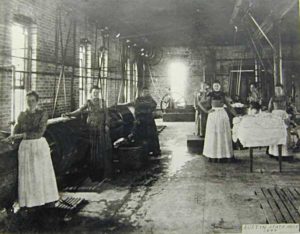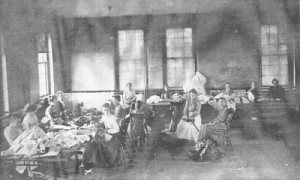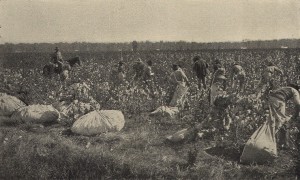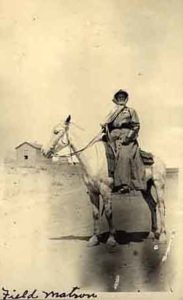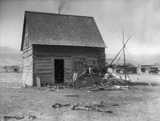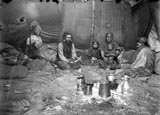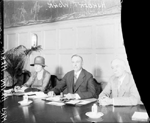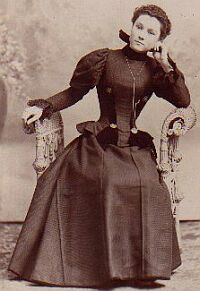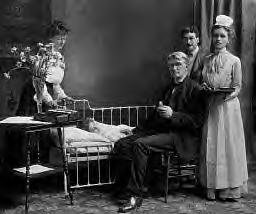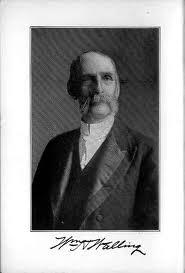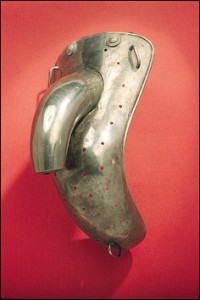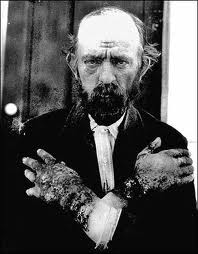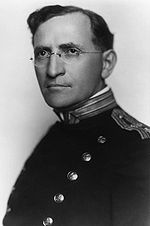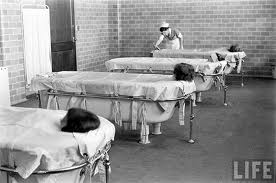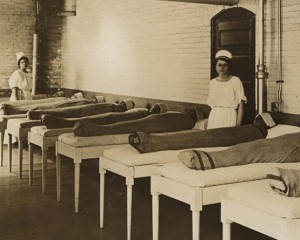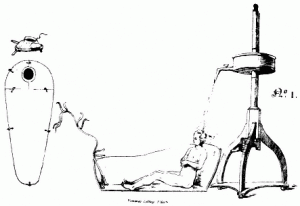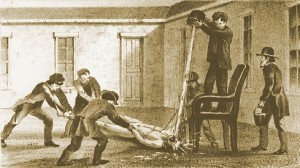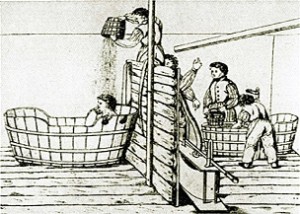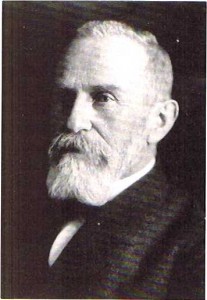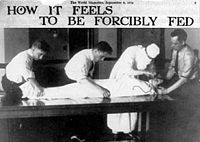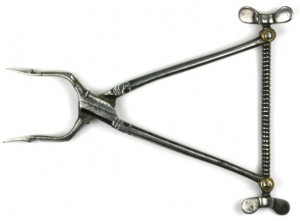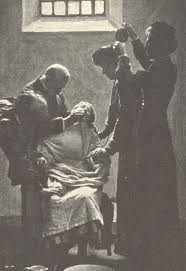Most insane asylums tried to use patient labor as a way of holding down costs, or as a sort of occupational therapy. At the Canton Asylum for Insane Indians, Dr. Harry Hummer had a real mission to hold down expenses, since he knew that his small facility didn’t have the economies of scale that larger institutions did.
Female patients generally worked on household tasks, like sewing and laundry. Susan Wishecoby, an epileptic patient, wrote about scrubbing the floors, and other women complained about the amount of work they had to do. Men usually worked in the gardens or helped with livestock. Dr. Hummer couldn’t actually force patients to work, but many did because it helped them pass the time. They may have also wanted to please the attendants or Dr. Hummer by appearing cooperative.
________________________________________________________________
